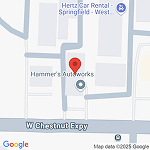A car collision can be a jarring experience, both emotionally and physically. Amidst the shock and confusion, one pressing question often arises: “Can I still drive my damaged car?”
It’s a valid concern, as driving a vehicle compromised by a collision can pose significant risks to both the driver and others on the road. In this article, we’ll delve into the key considerations and safety tips for driving a damaged car after a collision.
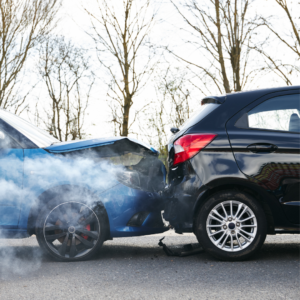
Assessing the Damaged Car: Safety First
Before even contemplating driving your vehicle post-collision, it’s crucial to assess the extent of the damage. While minor scratches or dents may not impede your car’s drivability, more severe structural damage could compromise its safety on the road.
Here’s what to consider:
Visual Inspection:
- Exterior Damage: Check for visible signs of damage such as dented panels, broken lights, or misaligned body parts.
- Undercarriage Inspection: Look underneath the vehicle for any signs of damage to the frame, suspension, or exhaust system.
Functional Evaluation:
- Fluid Leaks: Assess if there are any leaks, particularly from essential fluids like oil, coolant, or brake fluid.
- Mechanical Components: Test essential systems such as brakes, steering, and lights to ensure they function correctly.
Professional Assessment:
- Mechanic Inspection: Consult a certified technician to conduct a thorough assessment of the vehicle’s condition.
- Diagnostic Tools: Utilize diagnostic tools to identify any hidden damages that may not be immediately apparent.
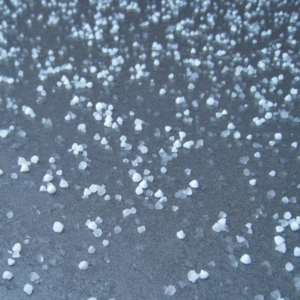
Environmental Considerations
Driving a damaged car post-collision also requires careful consideration of external factors such as weather conditions and road terrain.
Here’s how environmental variables can impact your decision to drive a damaged vehicle:
Weather Conditions:
- Rain and Snow: Exercise extra caution when driving in inclement weather, as compromised vehicle components may further reduce traction and handling.
- High Winds: Be aware of strong winds, which can exacerbate control issues with a damaged vehicle, particularly on highways or open roads.
Road Terrain:
- Uneven Surfaces: Take extra care when navigating uneven or pothole-ridden roads, as compromised suspension or steering components may affect stability.
- Off-road Driving: Avoid driving your damaged vehicle on rough terrain or off-road trails, as it may exacerbate existing damage and pose safety risks.
Traffic Conditions:
- Heavy Traffic: Exercise caution when driving in congested areas, as reduced maneuverability and braking capabilities may increase the risk of accidents.
- Avoid Rush Hour: Whenever possible, avoid driving during peak traffic hours to minimize the likelihood of stressful or potentially hazardous situations.

Legal and Insurance Implications
Driving a damaged vehicle after a collision can have legal and insurance ramifications that shouldn’t be overlooked. Here are some crucial points to consider:
Legal Compliance:
- Roadworthiness: Ensure your vehicle meets the legal requirements for roadworthiness in your jurisdiction.
- Insurance Coverage: Review your insurance policy to understand coverage limitations for driving a damaged vehicle.
Liability Concerns:
- Third-party Risks: Consider the potential liability implications if your damaged vehicle causes harm to others on the road.
- Insurance Claims: Understand how driving a damaged vehicle may impact your ability to file insurance claims for repairs or medical expenses.
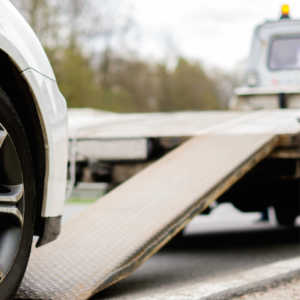
Safety Tips for Driving a Damaged Car
If you’ve determined that it’s safe and legally permissible to drive your damaged vehicle, here are some essential safety tips to follow:
Reduce Speed and Avoid Highways:
- Drive Cautiously: Reduce your speed and avoid sudden maneuvers to compensate for any compromised handling or braking capabilities.
- Choose Safe Routes: Opt for routes with lower speed limits and minimal traffic to minimize risks.
Monitor Warning Signs:
- Dashboard Alerts: Pay close attention to warning lights or unusual noises that may indicate ongoing issues with your vehicle’s performance.
- Temperature Gauges: Monitor temperature gauges to prevent overheating, especially if your vehicle has suffered damage to the cooling system.
Regular Inspections:
- Frequent Checks: Perform regular visual and functional inspections during stops to ensure no further damage or safety issues arise.
- Fluid Levels: Keep an eye on fluid levels and address any leaks promptly to prevent mechanical failures.
Emergency Preparedness:
- Emergency Kit: Equip your vehicle with an emergency kit containing essential items such as first aid supplies, flashlight, and basic tools.
- Emergency Contacts: Keep a list of emergency contacts handy, including roadside assistance and insurance providers.
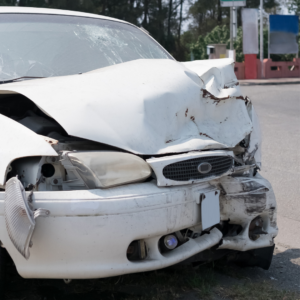
Prioritizing Safety in Post-Collision Driving
While it may be tempting to drive your damaged car after a collision, safety should always be the top priority. By thoroughly assessing the car damage, understanding the legal implications, and following essential safety tips, you can make informed decisions about whether it’s safe to drive your vehicle to an auto body repair shop.
When in doubt, err on the side of caution and seek professional guidance to ensure the safety of yourself and others on the road. Remember, it’s better to be safe than sorry when it comes to navigating the aftermath of a collision.
At Hammer’s Autoworks, we prioritize your safety and well-being. If you’re unsure about the drivability of your vehicle after a collision, don’t hesitate to reach out to our experienced team for expert advice and towing recommendations. Your safety is our utmost concern.

